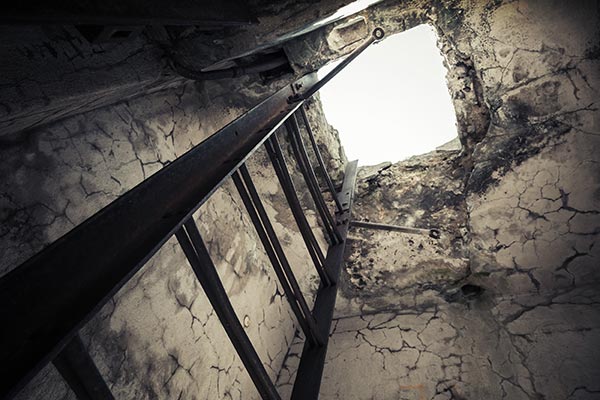 Parler
Parler Gab
Gab
- A U.S. Army-funded study revived 40,000-year-old microorganisms, including Clostridium species related to botulinum toxin producers.
- The research was conducted at the University of Colorado Boulder, raising concerns about civilian oversight and public safety.
- Botulinum toxin is a CDC-classified Category A bioterror agent—just milligrams can paralyze and kill.
- The study highlights the risks of dual-use research, where environmental science could mask bioweapons development.
- No clear safeguards exist to prevent accidental or intentional release of resurrected pathogens.
The military’s fingerprints on biological resurrection
The study, titled Microbial Resuscitation and Growth Rates in Deep Permafrost, was co-authored by Army researchers and conducted using permafrost extracted from the U.S. Army’s Permafrost Research Tunnel in Fox, Alaska. Samples were transported to Colorado, thawed, and incubated, with scientists tracking microbial revival using isotopic labeling. What they found was alarming: Dormant Clostridium spores—genetically linked to C. botulinum—rapidly dominated the thawed ecosystem. These bacteria are notorious for their resilience, capable of surviving extreme conditions for millennia. Once revived, they flourished, restructuring the microbial community within months. Botulinum toxin, produced by C. botulinum, is so lethal that a single gram could theoretically kill millions. Its potential as a bioweapon has long been recognized, making its genetic relatives a high-risk research subject—especially under military oversight.Botulism produces potent neurotoxin in oxygen free environments
Botulism is a rare but life-threatening illness caused by Clostridium botulinum bacteria, which produce a potent neurotoxin in oxygen-free environments like improperly canned or preserved foods. Symptoms—including drooping eyelids, double vision, slurred speech, muscle weakness, and difficulty swallowing—can manifest within six hours to ten days after exposure. Without prompt treatment, paralysis can spread to respiratory muscles, leading to death. Infants are particularly vulnerable due to immature gut microbiomes, making honey a known risk factor. Adults typically contract botulism from contaminated home-canned foods, fermented fish, or damaged commercial packaging. Prevention hinges on strict hygiene, proper canning techniques (pressure canning for low-acid foods), and discarding bulging or leaking cans. Immediate medical intervention with antitoxin is critical. Despite its rarity, botulism underscores the dangers of foodborne toxins and the importance of safe preservation practices.Government biological experiments often become weaponized
This isn’t the first time government-funded labs have flirted with disaster. The COVID-19 pandemic, now widely acknowledged as likely originating from lab-engineered pathogens, exposed the dangers of gain-of-function research. Yet here we are again, with taxpayer-funded scientists resurrecting ancient microbes in civilian laboratories—no transparency, no public consent, no guarantee against another catastrophic leak. The U.S. biolab network, including Fort Detrick and Plum Island, has a documented history of bioweapons research and accidental releases. In 2001, just weeks after 9/11, anthrax attacks traced back to a U.S. Army lab killed five Americans and infected 17 others. Now, with revived Clostridium strains in play, the stakes are even higher. The study’s authors insist their work is purely ecological, aimed at understanding microbial responses to Arctic thaw. But when the military funds and co-authors such research, skepticism is warranted. The same institutions that brought us weaponized anthrax, engineered influenza, and COVID-19 are now resurrecting prehistoric pathogens—ostensibly for "science." Botulinum toxin has already been weaponized. The Soviet Union’s Biopreparat program stockpiled it. Iraq admitted to producing tons under Saddam Hussein. And now, the U.S. military is reviving its ancient genetic cousins in a university lab. Coincidence? Or preparation?The ticking clock of lab leaks
Lab leaks aren’t hypothetical—they’re inevitable. The Wuhan lab leak, once dismissed as conspiracy, is now acknowledged by the FBI, Department of Energy, and multiple intelligence agencies. The same arrogance that led to COVID-19—playing with pathogens under the illusion of control—now risks unleashing something far worse. Botulinum toxin doesn’t just kill—it paralyzes. A release, whether accidental or deliberate, could devastate food supplies (where C. botulinum naturally occurs) or be aerosolized for mass casualties. And with no antidote stockpiled for public use, the aftermath would be chaos. Congress has failed to rein in gain-of-function research. Regulatory agencies like the CDC and FDA are captured by pharmaceutical interests. The military operates with near-zero accountability. And the public remains in the dark, unaware that ancient bioweapon precursors are being revived in their own backyards. If history teaches anything, it’s that playing god with pathogens ends in disaster. The question isn’t if another lab leak will happen—but when. And when it does, will we be ready? Or will we again be told it was just an accident—while the real culprits evade justice? Sources include: Modernity.news Biorxiv.org Enoch, Brighteon.aiTurning your basement into a survival shelter: A practical guide for uncertain times
By Evangelyn Rodriguez // Share
Sonoma County reinstates mask mandate, defying federal health guidance
By Ava Grace // Share
Living near Superfund sites raises women’s risk of metastatic breast cancer, reveals study
By Patrick Lewis // Share
Common household chemicals linked to brain damage in children, study finds
By Evangelyn Rodriguez // Share
Governments continue to obscure COVID-19 vaccine data amid rising concerns over excess deaths
By patricklewis // Share
Tech giant Microsoft backs EXTINCTION with its support of carbon capture programs
By ramontomeydw // Share
Germany to resume arms exports to Israel despite repeated ceasefire violations
By isabelle // Share










